




We deliver quality, organisation and people – focused services with a vision of being the best and not the biggest.





We believe in innovation, agility and quality and to achieve that, our colleagues are supported to be the best they can be.
We have over 50 colleagues attending PAM funded University courses.
We deliver over 40 training, development and awareness sessions every month to our colleagues on a range of different topics.
Our colleagues are supported in developing their writing skills and getting published is part of the achievement.
Our e-learning platform is going from strength to strength, with a wealth of on-demand webinars for our colleagues from every avenue in the business.

We would like to talk to you if you are interested in joining the Occupational Health business here at PAM Group, please contact our recruitment team at Recruitment@pamgroup.co.uk to arrange a call.
The world of Occupational Health and workplace wellbeing is constantly developing. Encouraging our colleagues to keep abreast of developments, means our clients and their employees get the best and most up to date advice.
PAM Academy facilitates the growth and development of all colleagues at PAM Group and supports the wider management team with evidence based learning, client focussed insight and delivery of recognised industry acceditations.
www.pamgroup.co.uk










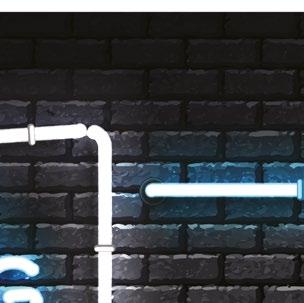









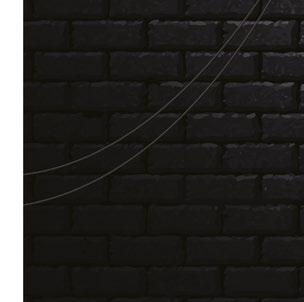












In medieval times, the first institutions for disabled people were established, however, not many people with disabilities lived in these as those blind, deaf, or crippled remained in communities and worked if they could. If they couldn’t, they were either supported by their community or begged. For those with learning disabilities, the King had a duty to care, although as he also had custody of their assets, it is likely this duty of care only extended to the wealthy. Interestingly, Emma de Beeston, a lady of means in the 1300s, developed a loss of mental capability, and therefore started to fall foul of this particular ‘duty of care’. Her strength was shown when she appointed neutral guardians to protect her lands and assets from being taken by the King and therefore enabled financial support for herself till her death.
In the 1500s, many disabled women were put to death and accused of being witches as infirmity was seen as a badge of evil despite the 1535 Poor Law Act which required parishes to look after their poor, aged and disabled. In 1593, An Act for the Necessary Relief of Soldiers and Mariners was introduced whereby every parish was charged a weekly sum to look after those injured and maimed.
In the 1600s, Dr Hawes wrote that “Maniacs recover much sooner if they are treated with torture instead of medicines”. However, in 1664, the plague reduced the gap between the disabled and the able, as so many people experienced impairment. You would think this would make a difference and perhaps it did as in the 1700s, asylums provided a safe space
for the mentally ill, with improved treatments and even some meaningful occupations, demonstrating how beneficial work and real-life tasks were.
Not much better in the 1800’s. A Christmas Carol in 1843 stereotyped the disabled as pitiable and in 1876, Henry Maudsley, a leading psychiatrist, publish views that lunatics were not fit for treatment. Mary Dendy helped set up schools for mentally handicapped children as she was convinced that they were a threat to the community. On a positive note, the 1800s saw William Rush Jr, advocate occupational engagement for the disabled and form the society of Occupational Therapy.
How has the view of disability changed over time, where are we now?
Surprisingly, the early 1900s did not improve much! The Eugenics education society, formed in 1907, believed that offering medical and social help to the disabled would lead to the degeneration of humanity. The Mental Deficiency Act, of 1913, saw learning difficulties and mental ill health labelled as imbeciles, even though many people developed their mental ill health because of childhood trauma or institutionalism. 1939 saw Hitler order the ‘mercy killing’ of disabled people, on the other hand, a breakthrough was made in the UK with the 1944 Disabled Persons (Employment) Act, which required employers with 20 or more employees to ensure that at least 3% of their workforce were disabled people. This act officially recognised the importance of employment to those with a disability. We can’t but help bring in a specific Occupational Health angle here! 1946 saw The National Insurance (Industrial Injuries) Act pave the way for the payment of compensation for loss of earnings and loss of ‘faculty’ caused by an industrial accident or prescribed disease. This was important in recognising that work could cause disability.
The 1970s really saw the tide turn. There was the commissioning of a single social services department in each local authority area to provide care and social support but also the Chronically Sick and Disabled Persons Act which was the first in the world to recognise and give rights to disabled people, including equal access to recreational and educational facilities. Buildings open to the public were required to provide parking and toilet facilities for disabled people and disabled driver badges were introduced. The Disabled Persons Act 1986 strengthened the previous act, requiring local authorities to meet the various needs of disabled people.
America led the way in 1990 with The Americans with Disabilities Act – a civil rights law that prohibits disability discrimination. The UK followed suit quickly in 1995 with the landmark introduction of the Disability Discrimination Act. This made it illegal to discriminate against disabled people within employment. But specifically, service providers had to make reasonable adjustments,
although it wasn’t until 2004 that access to buildings was made a legal requirement. Continually moving forwards, an amendment to the Act in 2005 not only promoted equality but the need for disabled people to be ‘involved’ in the design of services and policies and therefore, for the first time were not just seen as passive receivers of whatever people doled out but part of the decision making. The ‘Improving the Life Chances of Disabled People’ report marked the first official recognition of a social model of disability.
2010, another game-changer! The UK Government ratified the United Nations Convention on the Rights of People with Disabilities supporting the rights of 12 million disabled children and adults in the UK. The Equality Act was also passed by Parliament outlawing direct or indirect discrimination and harassment in employment, vocational education and the provision of goods and services, for nine protected characteristics, including disability.
This legislation, however made it difficult to interpret the criteria for disability despite being clearly documented and therefore most of what we understand in the last 12 years has been built with case law and the outcomes of employment appeal tribunals. A major requirement of the latter legislation has been reasonable adjustments. It is up to the organisation to decide what is reasonable but the need to defend decisions in court must always be kept in mind. Many condition charities have good guidance on possible reasonable adjustments, but Occupational Health can be helpful here as they take the individual and the workplace into account, creating more bespoke suggestions for employers to consider.
Disability passports or health adjustment passports have become popular and useful as these identify the specific needs of an individual with a disability and therefore make it easier to take these to new roles or new line managers. Lots of adaptive equipment has become available with the improvement of technology and workplace support has increased with the use of Access to Work,
a government scheme to support individuals in work (available since 1994). WRAP (Wellness recovery action plans) can be a great support for identifying individual reasonable adjustments. If more significant support is required then Access to Work is a good financial scheme to support employers in supporting employees, including specific mental health support. Saying that, it is the individual who must apply, and recent changes prohibit civil services from utilising the service. Support now needs to be funded by each department which can be done privately including through PAM Group who have experts to hand.

Our view or awareness of disability has changed since COVID-19 with greater emphasis placed on the disabling impact of hidden disabilities such as long-term health conditions as well as poor mental health. Covid-19 has enabled the growth of the Equality and Diversity movement which strongly advocates equity for disabled individuals alongside others. The use of Occupational Health is growing as organisations see the benefits of supporting disability but also the increase in Social Values where inclusivity has been embraced. It is so refreshing to see so many more individuals that don’t fit into the norm at work and on our TVs.
Some people feel this has a negative connotation, after all, what is normal, and does this word respect disabled individuals as having any control over their lives? Differing ability has been suggested as this put’s attention on ability rather than disability. However, it is for this reason that so many people find the term offensive. Pretending that a health condition is just a set of interesting abilities and ignoring the disabling condition and the challenges that individual has faced doesn’t seem right to some.
The disability population is likely to see ongoing improvements in the future which is encouraging. We’ve come a long way!
Is the next step to challenge the word disability?
Many of us spend significant amounts of time sitting, whether for work or for leisure. While this may be necessary, sitting for extended periods of time can cause back pain, particularly in the lower back. you might have good standing posture, but that doesn't mean you have good sitting posture.
The most recent advice from ergonomic specialists, on the other hand, is widely accepted and has been shown to reduce back pain.
A good sitting position relieves pressure on the spine and promotes good circulation and blood flow throughout the body and legs.
While some advice may be tailored to your height and preferred seating position, there are a few golden rules to follow to avoid lower back pain while seated:
• Do not cross your legs – this disrupts your circulation and is especially bad for people with sciatica
• Keep your feet flat – this can be on the floor or on a footrest if needed
• Your knees should be slightly lower than your hips and bent at around 90 degrees
• Keep your back pressed against the backrest of your chair rather than slouched forwards – this is important as it provides support on your spine
• Your shoulders should be relaxed and your arms should be bent in an L shape at the elbows
• If there is a gap between your lower back and the backrest of the chair then introduce a lumbar support to bridge this gap and keep your spine fully supported
By following these rules, you will be keeping your body neutral and exerting as little pressure as possible on your spine.
If you work at a desk on a regular basis, you should have a setup that meets your needs. This includes customising the height of your desk, chair, and monitor, as well as the location of your keyboard and other accessories. Here are some hints for avoiding back pain while working at a desk:
• Your monitor should be in line with your natural level of eyesight, or at least no higher than two inches above this
• Your monitor should also not be further than an arm’s length away to discourage leaning
• Your forearms should be straight and bent at the elbows, with your keyboard easily within reach
• Keep all of your equipment directly in front of you to avoid needing to twist or rotate your spine
If you have the option, you can also alternate between sitting at your desk and working at a standing desk. If not, make sure to take frequent standing breaks to avoid back pain.
It was once thought that sitting with your legs at a 90-degree angle to your spine was the best way to sit. However, ergonomic specialists no longer recommend this method. Instead, sit with your chair slightly reclined at an angle between 100 and 110 degrees. To maintain spine support, keep your spine straight, shoulders relaxed, and your back pressed against the backrest of your chair. Maintain a straight spine and neutral hips, with no slouching between your hips and your back. This will significantly reduce the pressure on your spine and prevent you from experiencing pain.
Some chairs make it easier or more comfortable to sit correctly than others. PAM Health carries a wide selection of ergonomic chairs that are appropriate for people who have lower back pain or who want to avoid experiencing back pain in the future. Visit our website to explore some of our best back pain chairs and make an informed decision before purchasing your next chair.
Lumbar support should be placed at the curve of your back. Sit back in your chair and place your lumbar support in the gap that is found between your back and the backrest of your chair. Not everyone has this gap and some chairs will naturally provide lumbar support whereas others will not.

Quadratus Lumborum refers to the muscles between the ribs and the pelvis on either side of your spine. Pain in these muscles can be caused by slouching to either side or twisting your spine. Sit straight and keep the best practices for seated posture in mind to avoid aggravating your QL muscles further.
You should keep the best practices for sitting in mind even if you are sitting on a sofa rather than an office chair. This means to keep your spine straight, not twisted or slouched, and keep your knees below your hips and bent at around 90 degrees.
Lower back pain when standing can actually be caused by your seated posture. You should try to correct your seated posture by sitting in a neutral position and taking regular standing breaks. By doing this, you will reduce the pressure on your spine and this can prevent back pain from occurring when you stand or walk
The cost-of-living crisis will have a significant impact on the mental health of your workforce. Take proactive action to help them weather the storm.
The cost-of-living crisis, which has already seen food, mortgage and heating costs soar, is set to tip even more people into experiencing the ‘winter blues’ this year.
Many employees, who typically use the run-up to Christmas as a reason to be cheerful, are instead saying they can’t even afford to put the heating on or buy winter clothes. This not only has serious implications for their physical health but also their mental health. Although employers can’t take away these worries, you can support and build the resilience of your workforce, to help them weather the storm and reduce the number of employees going absent with stress, anxiety or depression.
As human beings, we are only designed to handle so much pressure. We can usually cope with two or three significant stressors at once, so when things get more challenging, our ability to cope is diminished.
If employees are constantly worried about their finances, they have reduced capacity to manager other work and life demands. This means if they’re also struggling to meet a deadline or a customer becomes aggressive or their car breaks down, they may not be able to cope as they normally would.
Instead of waiting until they get to breaking point, a valuable exercise is to help employees take stock of the pressures they’re under and what they can and can’t change. Most people know which “straw is breaking the camel’s back” but need encouragement to act on this. For example, if they’re struggling to juggle work and eldercare, can they work more flexibly or can another relative help? If they’re struggling with a deadline, can it be moved back a bit?

Every year, the colder darker days cause many employees to develop ‘winter depression’ – medically referred to as seasonal affective disorder (SAD). The symptoms of this can range from persistent low mood, lethargy and a loss of pleasure or interest in normal activities to feelings of despair, guilt and worthlessness.
Over two million people in the UK are affected, but with people’s mental reserves already running low, even more people will be tipped into becoming affected this year. The costof-living crisis could also cause them to become affected earlier than usual, if they can no longer afford their usual Christmas experiences to keep their mood high until January.
Although the exact causes of the ‘winter blues’ are not fully understood, a lack of serotonin, due to reduced sunlight is a key factor, meaning it’s important to encourage employees to go outside during daylight hours every day.

Managing stress levels and exercise can also help, so factor the mental health benefits of this into your overall wellbeing strategy. Encourage managers to lead by example by taking ‘fresh air breaks’ and leaving their desk at lunch. Sunrise alarms can assist with getting up on dark mornings, and lightboxes, which simulate the intensity of summer's midday sun, used in the first part of the day can boost mood and concentration levels.
Although many of the issues now facing employees are non-workrelated, pressure at work might be the only factor that can still be controlled. This means the role of managers in supporting the mental health of their team is more important than ever. Not least as one in three (33%) employees see a supportive manager as an important wellbeing benefit, according to research carried out for our latest Health at Work Report.

As managers at Kura, one of the UK’s largest customer service centres, discovered when they took part in managing mental health workshops, the human side of managing a team matters just as much as managing targets and output. After learning how to have supportive conversations with employees and build a positive culture, managers were able to make employees feel much more cared for and loyal to the organisation.
Critical to empowering managers to provide this level of support is first educating them about the warning signs that someone is starting to struggle, so they can be supported before an absence or performance issue arises. These distress signals can include reduced motivation and concentration, missing deadlines or changes in attitude or appearance due to reduced self-care.
Some of the stressors now facing employees are so huge, and seemingly unmanageable, that many people are in denial and don’t want to face up to them. If they know their energy bill or mortgage is set to almost double in a few months, instead of cutting costs, they might decide they want ‘Christmas as normal’ while they still can, setting the ground for bigger issues further down the line. Others are so overwhelmed by pressure at work, due to ongoing skills shortages, their ability to problem-solve to improve their situation is reduced.
In both cases, it can be helpful for the individual to be given the opportunity to have a wellbeing check, so they can talk one-to-one, in confidence, with a counsellor about how they’re feeling. This can provide a safe space for them to identify what they can do to manage their situation to protect their mental health.
The counsellor can explore with the employee what coping strategies may support them with managing their responses to stressful situations and discuss how they might discuss their work-related stressors with their manager. This may reduce the risk of them having to go absent from work. If further support is needed, the counsellor can also signpost them into additional psychological support services the employer might have in place, such as counselling, cognitive behavioural therapy (CBT) or trauma therapies, such as eye movement desensitisation and reprocessing (EMDR), if appropriate.
Musculoskeletal (MSK) pain is a problem that does not impact just physical wellbeing, sufferers often have significant limitations which impact overall wellbeing.
I’ve got a bad back now so I’ll need to be careful when lifting
Felt a slight twinge in my back after deadlifting
Recovery and management influenced by our past experiences, beliefs and environment
My symptoms have reduced now but I know once you’ve got a bad back it never gets better
I will rest for the next 6 weeks and wait for this to settle
My mum always said lifting was bad for your back
• Pain awareness
• Self-limitation
• Fear avoidance
• Behaviour change
• Unconscious self-Protection
• External influence of loved ones, the media, health professionals, past experiences
It is human nature to identify clear pain responses to activities to avoid harmful things and promote positive experiences. As a result, it is easy to attribute isolated activities to experiences. Especially when they are reinforced by people around us whose opinions are respected, even if these opinions are not necessarily relevant or supported by research.

This cycle is influenced further by any flare-up, change in symptoms, or new advice and will constantly mould perceptions of current ‘self’ vs pre-condition ‘self’, highlighting symptom-aggravating activities, and perceived symptom-easing activities.
“I had back pain for years until I got my new chair”
Chair in the office is uncomfortable My symptoms are worse when I’m in work
“Don’t wait around with back pain. Once it goes it’s gone forever”
The chair in work must be the reason for my pain so I can’t work unless it’s replaced
“You must sit upright all the time otherwise your back will degenerate”
How thoughts and beliefs influence symptoms affect the intervention delivery aimed to improve quality of life.
Pain is influenced by many things, not just structural damage. Scrutinising the causes too simplistically misses the point.
Chair in the office is uncomfortable, but my deadlines are also unfair and I feel like I have too much pressure on me. I also feel judged when I get up and move around.
My symptoms are worse when I'm in work.
My symptoms are multi-factorial, and while the chair might not be optimal, it is not the only thing that I nweed to address to resolve my discomfort
Length of time siting Environmental stress General lifestyle
As pain is multifactorial, treatments that address 1 factor rarely have long-term health benefits in isolation (steroid injections, massage, or counselling). Effective self-management would address as many contributing factors as possible.


Many self-management plans are not implemented by the patient.
Research indicates only 50% of self-management plans are fully adhered to. Some of the main reasons for this are:
MSK experts actively support empowered encouragement, providing the knowledge, tools and information needed to excel despite any condition. This is achieved by effective communication.
The intervention has not been explained
The intervention does not fit philosophical beliefs
The intervention is not feasible
Improvements do not occur as expected
The intervention can’t be built into routine
experts will ask about pain beliefs, enabling an understanding of the negative thoughts and beliefs developed which may help in the short term, but not in the long term.

DNA (deoxyribonucleic acid) is a long molecule that we have inherited from both our parents that makes up the blue-print of our bodies, which holds essential information regarding how the body develops, functions and grows.
Epigenetics is a relatively new but growing area that can give us an insight into what specific changes we can make to our lifestyle/environment in order to improve our biological age, by analysing our DNA. Our biological age is considered to be a more accurate measure of our true age, as it accurately reflects how quickly our cells are ageing.It may be a difficult concept to grasp at first but before we go into more details, it is important we understand what DNA and genes are.
A gene is the part of the DNA that carries instructions to produce a specific protein. We need proteins as they are essential for almost all life processes. From person to person, the majority of our genes are exactly the same, but it is the less than 1% difference in our genes that makes us individually unique and holds the secrets to our health as well as wellbeing. Small changes (mutations) to the instructions for the production of proteins may have a beneficial impact, negative impact or no impact on our current/future health.
What is Epigenetics? This is a question we are seeing more and more regularly these days, with a lot of buzz around the huge potential benefits understanding epigenetics can bring, but what does it actually mean?
Epigenetics is the study of how our lifestyle and surrounding environment influence the behaviour of our genes. To simplify, if we can think about each gene having an “on-off switch”, our lifestyle, as well as our environment, can influence whether a particular gene is “on” or “off”. The combination of which genes are “on” and which are “off “ impacts on our overall health. I like to use the analogy of a crossroad to try to explain this better –in the picture below we can think of each traffic light as representing a gene.
In a nutshell, yes. By understanding our epigenetics, we can understand what specific changes we need make to our lifestyle or environment in order influence more “good” gene behaviours, lessen “bad” gene behaviours and overall improve our biological age.
If all the traffic lights were red then no cars would be moving and although the likelihood of an accident occurring is at a minimum, it is not an efficient/productive way of controlling traffic.
If all the traffic lights were green, then all cars would be moving, however, the risk of an accident would be at its highest. Having the right combination of red lights and green lights switching on and off would help the crossroads work in the most efficient way to keep traffic moving whilst keeping the risk of accidents as low as possible. Epigenetics is the study of how our lifestyle and environment can influence these traffic lights.

Epigenetics can be used as a good predictor of our biological age, and can also provide information on the biological age for different parts of bodies, as each part of our body does not age at the same rate i.e. the biological age of your eyes and the biological age of your hearing.
Epigenetics can also be used to see what our risk of developing certain health problems such as certain cancers, mental health problems, diabetes, gut-related health problems, respiratory-related health problems and cardiovascular health problems.
A 30 year old gentleman who eats healthily, exercises daily and maintains a slim muscular physique. He wanted to assess his epigenetics to help with his exercise performance. He was surprised to find out it his biological age was higher than expected. By looking at his epigenetics, it was suggested that he was not allowing his body recover enough between exercise sessions and hence was advised to reduce the length of his exercise sessions, which will help to reduce his biological age.
A 35 year old lady who is an ex-smoker, drank alcohol, did not really pay too much attention to her diet, exercises very little and has had difficulty losing weight. Her biological age was 49 when it was first assessed and although her DNA shows that at a baseline she may have an increased risk of developing certain cardiovascular-related health problems due to her ethnicity, her lifestyle choices were adding to that risk. After making changes to her lifestyle based on the previous report’s recommendations, she managed to reduce her biological age to 38.
A 43 year old lady who always seems to be unhappy and moody, works well under pressure but tended to avoid very stressful situations. She does not smoke or drink alcohol but she has been trying to lose some weight. From her epigenetics it was identified that she had reduced dopamine and serotonin levels which increases her risk of anxiety, panic disorders and depression. As she now has an explanation of why she feels unhappy and that she is at an increasing risk of having a mental health disorder, she has actively tried to spend more time on herself and focus on mindfulness.
How do we test for our Epigenetics and is it a one-off test?
A saliva sample is required for this test, which is then sent off to a specific laboratory that can analyse the DNA as well as epigenetics. It can be a one-off test, but to assess how effective any recommended changes to lifestyle and environment have been, it is worth re-testing to see if your epigenetics has changed.
ToHealth was recently awarded 2022 Wellbeing Initiative of the Year for our work exploring DNA & Epigenetics and how understanding this can help improve quality of life. If you’d be interested in learning more or ordering tests for you and your workforce, please don’t hesitate to reach out to us: engagement@tohealthltd.co.uk
Can understanding our epigenetics help to improve our health?




















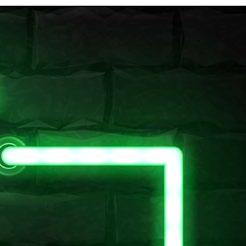




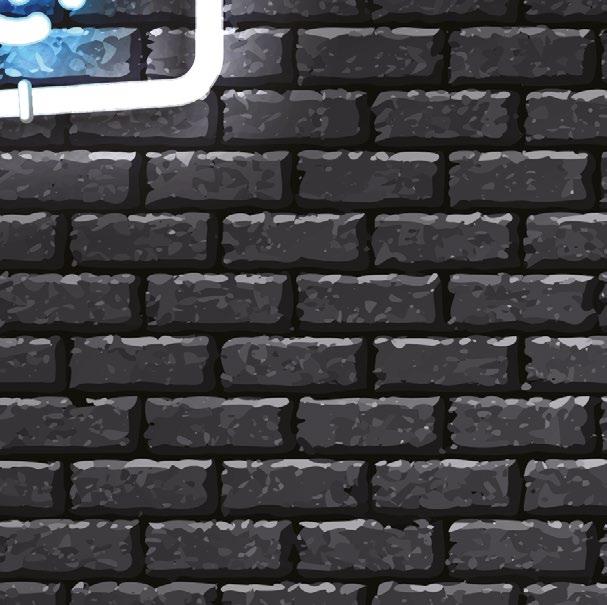


























A large portion of the working population spends their time at work sitting at a desk. As a consequence, there can be the perception that the fault lies with the furniture or equipment if people develop aches & pains. Whilst there is an element of impact from poor workstation ergonomics – such as poor chair adjustability or sitting at an angle, there are additional contributing factors.


Sedentary activity is defined as any waking behaviour characterized by an energy expenditure ≤ 1.5 METs, while in a sitting, reclining, or lying posture (1). Therefore, sitting while we commute, taking breaks from work or excessive relaxation periods, can all be detrimental to physical health.
Positive behaviour changes to interrupt sedentary periods, such as getting up from the desk during work will only help to improve health statuses. A workstation user can have the best furniture & supportive technology & equipment available, but if they don’t move regularly, exercise & perform simple activities such as walking, then they will not prevent poor physical health.


Individuals in pain often avoid activities that aggravate their pain & symptoms, or that they think might exacerbate their problem. This can be called ‘fear avoidance’, due to the fear of making their condition worse. But exercise & controlled activity are the best ways to both recover from & prevent ill physical health.
Movement & activity will strengthen joints and soft tissues, including muscles, improve flexibility and actually reduce pain sensitivity.
People who have sought advice from a qualified clinician, such as a physiotherapist, will have specific exercises to support their health & to encourage graduated loading to increase fitness & improve health.
I need a new desk or special equipment to prevent pain at my workstation
Exercise will make my problem worse
Diagnostic imaging for the purposes of musculoskeletal issues has actually been proven to be detrimental. Imaging results generate damaging effects on recovery & perceptions of functional capability, alongside the fear of further exacerbating conditions.


















































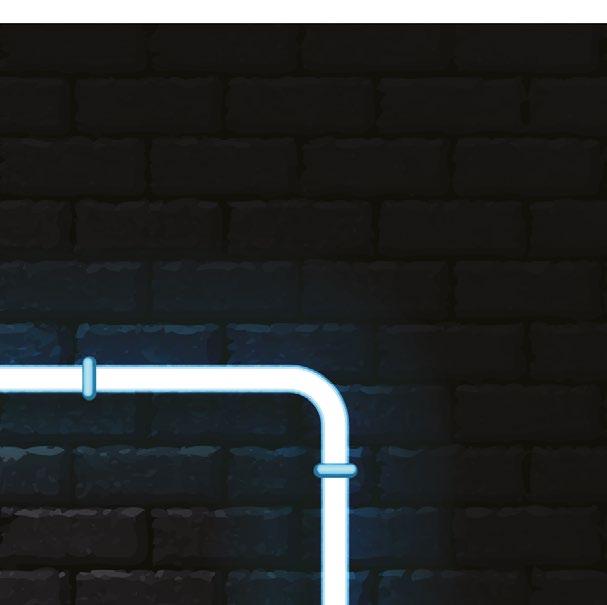





Research identified that individuals receiving treatment did not have their treatment plan or pathway altered as a consequence of the imaging results. It was identified that awaiting imaging results prior to initiating a treatment plan resulted in delayed onset of care & an increased volume of chronic symptoms with psychosocial flags & more inflated barriers to recovery (2).





Joints can create a variety of noises, including popping, snapping, catching, clicking, grinding, grating, and clunking. The technical term is “crepitus”, from the Latin “to rattle”. It is normal for people of all ages to experience these noises, pain free, and although they can be alarming, are seldom a sign that something is wrong. For myth busting within a myth buster, cracking your joints also doesn’t cause arthritis.
For the majority of the time, there is a structural cause for these noises rather than a pathological reason. For example, tendons can move naturally over bony protrusions, and then quickly snap back into place. For example, in the knee when transferring from seated to standing, or ascending stairs. This type if joint noise occurs more with age, as muscles lose elasticity and reduce in size and strength and can become stiffer. Any regularly painful crepitus should be checked by a healthcare professional.
Musculoskeletal physiotherapy is so much more than 'just a massage'. Musculoskeletal physiotherapists are experts who work with individuals looking holistically at symptoms and devising plans which will ensure improvements in pain and symptoms are achieved in both the short and long term.
Treatment modalities range from joint mobilisation and manipulation to exercise prescription and support in adopting positive lifestyle changes, such as addressing deficits in diet, sleep patterns and emotional wellbeing.
Are you interested in going to the gym? Has your GP given you a referral? Does your body need to work out, but your mind has no idea where to start? Your mind will thank you for it too!
Muscle building will increase concentration, focus, and alleviate stress, depression, and anxiety. Boosting creativity and reducing the need for pharmaceuticals. There are many reasons to start lifting weights. Could your gender be a reason you’re holding back on great health benefits?
If you’re just starting out at the gym or heading that way, then you have ‘newbie gains’ to strengthen your motivation! Newbie gains are a window of opportunity to lay the foundations of your authentic new self with the most amount of muscle growth - how you feel at the heart.
The gym can be an intimidating place, with equipment that looks like transformers, grunts from other users, peering eyes, and staff that you may or may not want to chat to! Everyone feels the same and the gym is a skill. It requires patience and understanding of your fears, enjoyments, and goals. Just like learning to read…No one starts reading War and peace, even now… so maybe thinking of bodybuilders as the ultimate in resistance training isn’t the truth and may
intimidate you. Resistance training is about moving your awesome body with weights. Allowing your body to adapt to this for lots of health rewards.
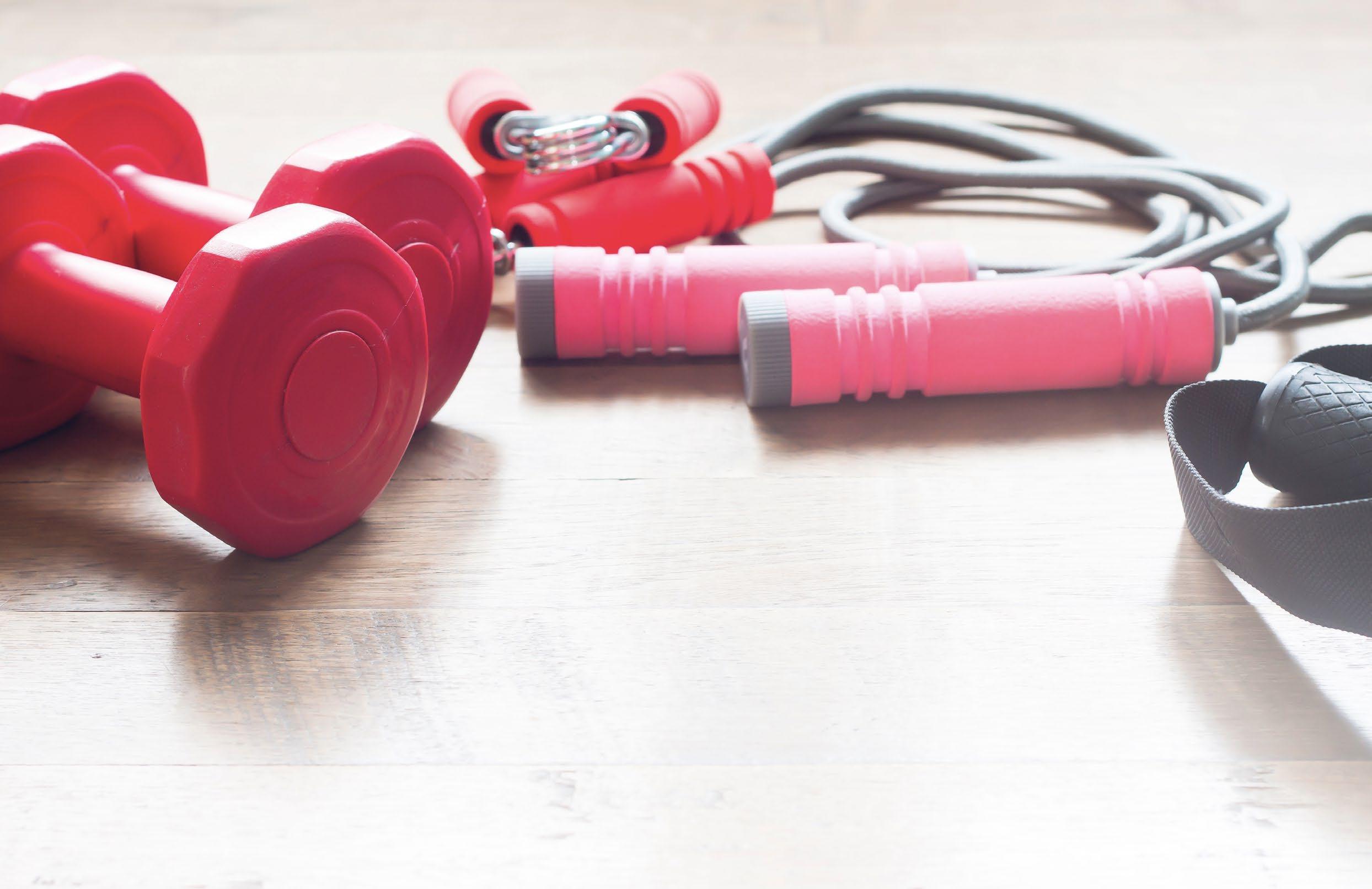
Being curious rather than fearful about the gym is achievable. Like your new body and mind, the gym is built on certain infrastructures, and over time, researchers have understood certain gender roles which are thankfully changing.
We now know that gender differences in how a person can train are small in comparison to all the inaccurate information. Where do you see these messages?
The environment – Gym layout. Weights are not a male space and cardio machines are not female territory.
Appearance – How you think you look to others (not how you actually look) This will influence your willingness to try new things, stay in an activity or even give it a go at all.
Social conduct – Looking at what others are doing or not doing and monitoring yourself. The only way around this is to zone in, focus on how your body feels within a mind-muscle connection.
• Women will become bulky if they train with heavy weights – This is not true, women who attain muscular bodies above and beyond a normal range, will be using enhancements such as steroids.
• Men don’t need to hip thrust and work their glutes – Both genders should be exercising their glutes in similar ways. The legs are the biggest muscle group and stabilised the spine. Therefore, affects balance, posture, and power within movements.
• Women do not need to strengthen their upper body like men – The chest and arms combined are major muscles. Working these will improve posture and avoid imbalances. If a goal is to reduce fat, muscle mass equals increased metabolism.
• Cardio only is good for women – Excess cardio will stress the nervous system and burn away muscle. The stress on the body will mean the body will store more fat due to overtraining. Resulting in yo-yo dieting and a dislike for exercise due to the way the body feels. Cardio is good for heart health but it is not an effective fat-loss technique long term.
• Men should allow more space for women in the gym –Gym culture is changing. Researchers say women are more adaptable to this change. Empathy within change is essential to avoid further psychological harm within a masculine-imageruled culture.
• Food is fuel! Eat a good meal of complex carbs, protein, and little fat 2 hours before your workout, or a small carb hit if you’ve not had time.
• Focus on compound movements – do not try to go heavy, focus on your technique first. Be patient.
• Don’t use the scale for results, a change in body composition will mean you will likely gain a few pounds or stay the same weight for a while.
If you’re regularly training (2+ times per week) and are not seeing results, that’s normal – give it 6 weeks and review with a personal trainer if you’re unsure.
Your body doesn’t know gender rules, so lift, stretch, hip thrust, and make noise as you need. Your body and mind will give thanks with positive hormonal rewards
Women can optimise their training potential if they work out knowing their menstrual cycle. You’re likely to reach personal bests within ovulation due to an increase in estrogen. Menopause is also a great time to take up resistance training as it can reduce difficult symptoms such as hot flushes, night sweats, and mood swings.
With the rise in social media as a platform for fitness training, understanding the truth of muscle gain for men psychologically needs more awareness before hitting the gym. Always look for different perspectives as a counterbalance. Especially, before considering enhancements, know the risks and peer pressure.
and better sleep too! You’re your own hero when no one else is watching and you will inspire others who see your self-confidence.
Knowing how gender works in the gym will give you the confidence to know your body more. ‘Overwhelmed’ can be a natural aspect of change. This is before you become competent - don’t believe it? Welcome your body to feel this truth when you give it a go…
It’s always helpful to seek support, if you don’t want to do it alone, seek professional advice from a counsellor or a personal trainer who is qualified to work with mental health.
Life is too short not to make gains both mentally and physically. Good luck!
Coen S, Rosenberg M, & Davidson J. (2018). “It’s gym, like g-y-m not J-i-m”: Exploring the role of place in the gendering of physical activity. Elsevier. - (196), 29-36. Stefano, S (2021). The resistance training revolution. New York: Hachette Book.
Here are some ways you can empower yourself when the inner critic sits on your shoulders instead of the barbell:
Did you know that men are four times more likely to be diagnosed with a neurodiverse condition, specifically autism, than women?

This fact has obviously led to a lot of questions and investigations and there are an increasing number of articles and studies exploring this statistic. There are a number of theories and hypotheses for this including:
Gender bias in measurement instruments
Difference in presentation across genders leading to males being ‘spotted’ more easily.
Dramatic change in thinking from the view that males will generally be more prone to neurodiversity. The answer possibly lies in all three.
When looking at diagnosis, some research suggests that women are diagnosed later in life across all areas of neurodiversity. The Dyspraxia Foundation(2015) for example found that the average age for diagnosis for DCD/Dyspraxia was 17 for males and 22 for females.
Research can be mixed and has found that there is no differences in males and females in dyslexia but that males are more likely to be diagnosed. (Ritter et al 2004, Jime´nez et al 2009).
Other research has suggested that there are ‘intrinsic similarities between boys and girls in the cognitive and neural mechanisms characterising typical reading and mathematics development, with few and small behavioural differences emerging between genders in older age groups’ (Cambridge Handbook of Dyslexia and Dyscalculia).
Research is mixed in relation to dyscalculia and maths difficulties. Bramley et al (2015) noted that in the US for example males show better results in high-stakes maths examinations. Other research has suggested that there is no gender difference for children who have poor maths ability but there was a difference for dyscalculia (Butterworth 2019).
Smith and Kirby (2021) discuss gender differences in Neurodiversity and note that males are four times more likely to be diagnosed with ASC/ASD than females and those females that do gain a diagnosis are more likely to be older and have additional support needs.

It is worth noting that research into ASC/D does not generally include females in the participants and the current criteria that are used as part of an ADHD diagnosis were developed in mostly male samples. As research is completed and more knowledge is gained in this area it is useful to understand not only the prevalence rates but also the reasons these may change and have shifted from where they were two or three decades ago.
Theories such as The Female Protective Effect Theory and the Extreme Male Brain Theory have both suggested reasons for why more males are diagnosed than females. In addition, there is research that suggests that women differ from men in their presentation of ADHD and ASC. For example, women may camouflage certain aspects of their autism and have more socially acceptable interests. In ADHD they present as more ‘dreamy’ and therefore are missed when looking for ADHD traits.
Smith and Kirby (2021) discuss Ascertainment Bias, which refers to males being more likely to be referred when exhibiting the same challenges as females. For example boys in the classroom may be more disruptive due to reading challenges than girls and so are noticed and referred on more easily.
From the summary above it can be seen that there is a large amount of existing and developing research, theories and ideas behind gender differences in neurodiversity.
As an organisation, ToHealth ensures we keep up to date with research that is emerging in this area so that we can support, guide and train our assessors, clinicians and clients on what this means for their work, assessments and employees.
In a prior role Rebecca Wones (ToHealth’s Director of Psychology) was asked to present for the British Psychological Society for their accredited CPD training around Neurodiversity in the workplace and gender.
In addition, it is important to note that we review new research in relation to neurodiversity and intersectionality. This is a new and emerging area and so we have not specifically commented on it here.
Dry January involves avoiding alcohol for the first month of the year. The point of it is to essentially start the new year on a healthier note after what might’ve been an alcohol-rich December. If you consider yourself a fitness enthusiast, then you may want to read on to find out how going dry could provide some extra benefits.
Yes, depending on your frequency and volume that you consume, the impact will fluctuate. According to exercise physiologist and certified strength and conditioning coach Sharon Gam, “If you’re drinking 2 nights a week, you’re interrupting at least 2-3 days of your training.” Admitting that drinking will directly impact your training only allowing a couple of effective sessions per week, slashing your progress. Sharon went on to say, “If people are serious about their health and fitness goals, reducing alcohol intake is an important move.”
Recovery – Our bodies consider alcohol as a foreign toxin, so, as soon as it enters the system, your body works overtime trying to metabolize it. Not only does the body try to metabolize the alcohol, but it prioritizes metabolizing it over other functions, including muscle repair. This specifically focuses on postworkout drinking as, if you don’t drink, your body can fully focus on building muscle rather than eradicating the alcohol toxins.
Sleep Quality – Do you know how alcohol can effect your sleep? According to exercise physiologist Pete McCall, “Even though you might feel like you
pass out after a night out, after drinking you’re actually not entering deep REM sleep.” During rapid eye movement (REM) sleep, testosterone is produced by the body. Human growth hormone (HGH) is produced by the body during nonrapid eye movement (NREM) sleep. Both of these are necessary for muscle growth and repair so without either your recovery can really be stunted.
Injury Risk – Exercising while hungover can cause serious injuries, especially if weights are involved. To begin with, if you’re hungover you will not be able to fully focus on what you’re doing. This, along with lifting heavy weights, can be a dangerous combination. As well as the risk of a physical injury you could also notice a drop off in performance levels. Research shows that a hangover can reduce performance by 11.4% which can have a significant impact overall on your performance.
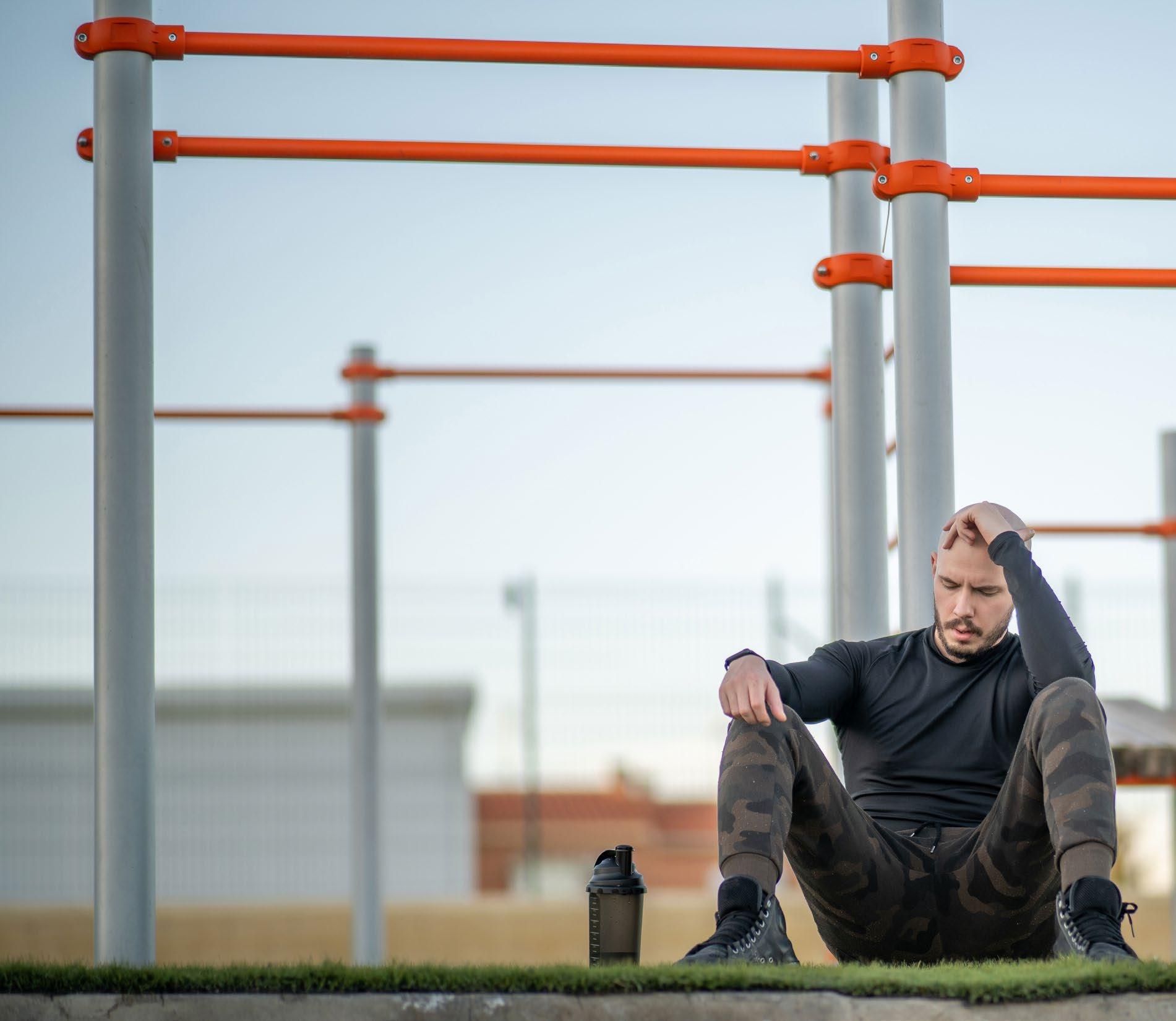
Body Fuel – Alcohol contains a lot of calories and no nutrients. Most alcoholic drinks are around 100 calories, but it’s rare to have just one drink. Drinking even a couple times a week can have a major calorific impact to your diet and can really stunt your progress in the gym or towards your weight-loss journey.
While participating in ‘Dry January’ you may not notice any results but the point of it is to help you realise the benefits of staying sober and help
you in the long term to look after your body. Much like many things, alcohol is acceptable in moderation, but from a fitness standpoint it will have a significant impact on your journey and you will greatly benefit from avoiding it completely.
visit 66fit.co.uk for great deals on home workout equipment.
If you are looking at beginning the year positively and starting your fitness journey then
PAM OH Solutions is a national Occupational Health provider. We work with clients across all industry sectors, delivering a flexible range of high quality, pro-active and cost-effective services. Combining the traditional values of professional integrity and good customer service with a modern progressive approach to service delivery.

We deliver efficient and fit for purpose Occupational Health solutions to improve attendance and reduce absence in full compliance with legislation. Our approach extends beyond simply providing a reactive management referral service, we aim to forge strong working relationships with our clients, working in partnership to deliver tailored absence management solutions.

PAM Wellbeing was born out of a need to support our customers and their employees from a holistic health and wellbeing perspective in 2009, expanding on the physical health and rehabilitation services that our occupational health sister company has expertly provided since 2004.


Our suite of mental health, psychological and wellbeing solutions enables organisations the option to engage with

a strategic wellbeing partner to support their employee’s whole health and wellbeing needs, and for their employees to benefit from the multidisciplinary expertise of our extensive team.
We work strategically to implement proactive workplace mental health and wellbeing solutions, to help organisations and their people thrive.
PAM Health is one of the UK’s leading healthcare-product suppliers. Based in Liverpool, providing a wide range of solutions to workplace-health challenges including:
• Posture and musculoskeletal problems
• Chronic neck and back pain
• Carpal tunnel syndrome
• Headaches and migraines
• Injuries to employees
• Hygiene and infection control
Working in partnership with all of PAM Group, we provide a range of products to assist with continued occupational health processes. From ergonomic chairs to sit/stand desks and everything in between.
